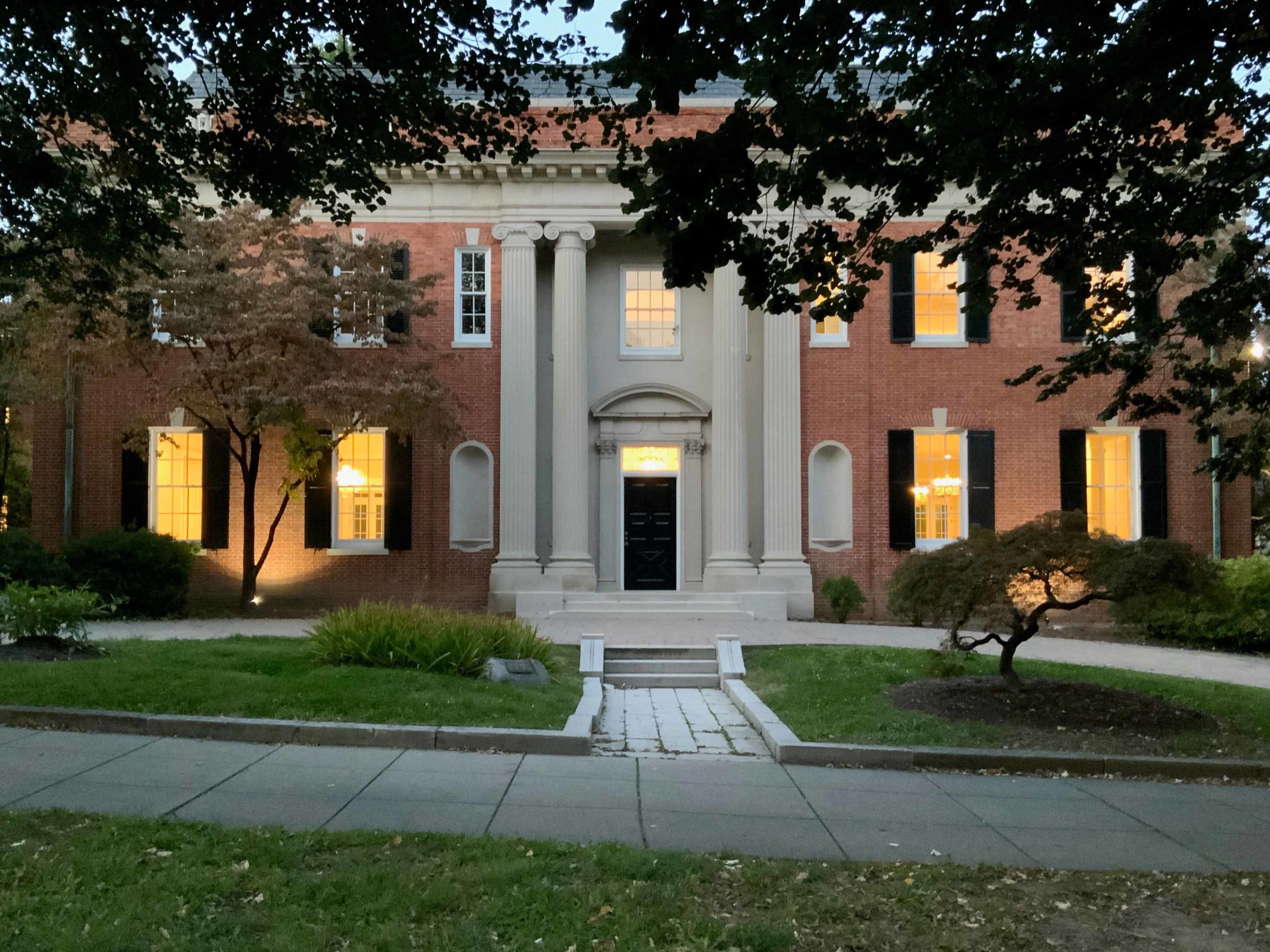Historic DC homes, like this renovated brick residence, blend old-world charm with modern comfort. Renovating such homes requires careful planning and respect for their architectural heritage. Washington, DC is known for its charming historic rowhouses and stately century-old homes. Remodeling a historic property in the nation’s capital offers immense rewards—unique character, timeless craftsmanship, and increased value—but it also comes with unique challenges. You must navigate strict preservation regulations, work with specialized materials and craftsmen, and plan thoroughly to maintain the home’s architectural integrity. In this guide, we outline five essential considerations for a successful historic home remodeling in Washington, DC. These tips will help you preserve your home’s historic charm while adding modern comfort and functionality.

1. Plan Thoroughly and Research Historic Guidelines
Before swinging a hammer, invest time in planning and research. Determine if your home is in a designated historic district or listed as a historic landmark. If so, there will be specific rules on what you can and cannot change, especially for exterior features. The District of Columbia’s Historic Preservation Office (HPO) publishes design guidelines to ensure any work on historic properties is appropriate and maintains the character of the neighborhood. Review these guidelines early, as they cover everything from window replacements to additions. Engaging with a preservation expert or architect during the planning phase can be invaluable. They can help you interpret regulations and develop a design that meets requirements while achieving your vision. Upfront planning helps avoid costly revisions later and ensures your remodeling plan honors the home’s historical significance from the start.
Action Step: Create a renovation plan that prioritizes preservation. Document the architectural details you want to retain and any historically significant features of the home. For example, original moldings, doors, or plaster walls might be preserved or restored rather than replaced. By planning around these elements, you set the stage for a remodel that respects the past. Noel Design Build emphasizes “preserving the past by utilizing modern techniques” to ensure the structural integrity and heritage of historic homes. With careful planning, you can achieve a design that blends old and new seamlessly.
2. Navigate Permits and the Historic Preservation Review Board (HPRB)
One of the biggest hurdles in historic home renovation is the approval process. In Washington, DC, exterior modifications on a historic property—such as facade changes, additions, or even window upgrades—typically require review and approval from the Historic Preservation Review Board (HPRB). This city board evaluates whether your proposed changes are “compatible” with the historic character of the building and district. Navigating the HPRB process means you’ll need to budget extra time for design reviews, community feedback, and possible revisions. Regulations ensure that architectural integrity remains intact, but they can limit design flexibility and add time to project approvals.
How to work through it: Start the permitting and HPRB review process early. Submit a detailed proposal to the Historic Preservation Office for preliminary feedback before formal review. It’s often helpful to work with professionals who have experience in DC’s permitting maze. A seasoned design-build firm like Noel Design Build brings deep expertise in securing permits and guiding projects through HPRB approvals. (In fact, Noel’s team includes staff who have managed the design and permitting of complex historic renovations in DC, including a Georgetown row house that achieved LEED Platinum status.) They can help anticipate HPRB concerns and adjust plans proactively. By understanding the approval process and engaging the right experts, you’ll smooth out bureaucratic bumps and keep your renovation on track.
3. Set a Realistic Budget (and Expect Surprises)
Historic homes can hide unexpected costs, so budgeting for a remodel requires extra diligence. Older homes often have outdated plumbing, electrical, or structural issues that must be brought up to code. There may be lead paint or asbestos to remediate, which adds expense. Additionally, maintaining or replicating historic details often demands specialized craftsmanship, which can be more costly than standard remodeling. In short, the maintenance and renovation costs for historic buildings are typically higher than for modern structures. When planning your budget, build in a healthy contingency (usually 10–20% of the project cost) to handle surprises behind walls or under floors.
At the same time, don’t forget potential financial incentives. Washington, DC offers various tax credits and grants for qualified historic restoration projects that meet preservation guidelines. For example, there are homeowner grants for exterior restorations in historic districts, and federal Historic Tax Credits for certain income-producing historic properties. Research these programs early; they can help offset renovation expenses and make an ambitious project more feasible. A knowledgeable contractor can assist you in identifying and applying for any incentives. Noel Design Build, for instance, stays up-to-date on local preservation programs and can advise clients on cost-saving opportunities. As one client noted, the team is “creative but conscious of budget concerns,” finding cost-conscious solutions that preserve the home’s integrity. By planning your budget realistically—and tapping available credits or creative solutions—you’ll avoid financial stress and ensure the project’s scope aligns with your resources.
4. Select Materials and Upgrades that Marry Old with New
Choosing the right materials is crucial in a historic home remodel. You’ll want to match the look and quality of original materials as closely as possible, while also improving the home’s performance and sustainability. In many cases, restoring or refurbishing original elements (windows, hardwood flooring, trim) is preferable to replacing them. When new materials are needed, seek out products that mimic historic craftsmanship—such as wood-framed windows or custom millwork—so that additions don’t look out of place. It’s equally important to use modern building technologies sensitively. For example, you might insulate walls and install high-efficiency HVAC systems to improve comfort and energy efficiency, but do it in a way that doesn’t alter the home’s exterior appearance or character. Noel Design Build follows a “green building” approach where durable, quality construction that will last is the baseline for all projects. They incorporate features like high-performance insulation, energy-efficient HVAC, and low-VOC paints to add value to historic homes with little impact on their original aesthetic.
When selecting materials or upgrades, consider the following:
- Reclaim and Reuse: Whenever possible, reuse original materials or source salvaged period-appropriate fixtures (doors, clawfoot tubs, light fixtures) to maintain authenticity.
- Quality Counts: Invest in quality craftsmen or fabricators for custom pieces. Skilled carpenters can create new moldings or cabinetry that replicate historic designs perfectly. This level of craftsmanship ensures the new work blends seamlessly with the old, a hallmark of successful historic renovations.
- Sustainability: Look for opportunities to improve efficiency without compromising character. This could include adding weather stripping to old windows, using insulated liners in chimneys, or installing a more efficient boiler. Sustainable design and historic preservation can go hand-in-hand – in one project, Noel Design Build even helped an 1800s Georgetown home become only the second in DC to earn LEED Platinum green building status. Modern upgrades, done thoughtfully, will make your historic home more comfortable and eco-friendly while preserving its charm.
5. Maintain Architectural Integrity with Expert Craftsmanship
Above all, a historic home remodel should honor the architecture and character of the original structure. This means any new construction or changes should feel like a natural extension of the existing house. Pay close attention to architectural details such as proportions, trim profiles, railings, and exterior finishes. A common guideline is that “new additions or alterations should not destroy historic materials or spatial relationships” – instead, they should complement the old. Maintaining this integrity often comes down to the quality of craftsmanship. Using experienced artisans and builders who understand traditional building techniques is essential. They will know how to reinforce an old floor without disturbing original plaster, or how to integrate modern lighting in a century-old ceiling. High-quality work ensures that the transition between old and new is virtually seamless.
Noel Design Build prides itself on outstanding construction craftsmanship and an eye for detail. Their team of skilled carpenters and restoration specialists takes care to restore historic structures beautifully and effectively, working in tandem with architects and clients to “get the job done on schedule, ensuring it will last for generations to come”. For homeowners, this level of expertise means peace of mind that your home’s character will be preserved, not accidentally eroded, during the remodel. Whether it’s matching a century-old brick pattern or hand-finishing woodwork to mirror an original banister, expert craftsmanship is what keeps a historic home renovation true to its roots. The result is a refreshed home that looks as if it has always been that way, retaining the soul and story that made you fall in love with it in the first place.
Conclusion: Transforming Your Historic Home with the Right Partner
Remodeling a historic home in Washington, DC can be a complex journey, but with careful planning and the right team, it’s incredibly rewarding. By considering these five key areas – thorough planning, navigating permits, smart budgeting, thoughtful material choices, and preserving architectural integrity – you’ll set your project up for success. Throughout the process, remember that you don’t have to go it alone. Working with a design-build firm experienced in historic renovations is often the deciding factor between a stressful project and a smooth one. With over 25 years of experience in the DC area and a reputation for superior craftsmanship and sustainable design, Noel Design Build is uniquely equipped to guide you through every step of a historic remodel. From obtaining HPRB approvals to meticulously restoring woodwork, our team handles it all with professionalism and care.
Ready to bring new life to your historic DC home? Contact Noel Design Build today to discuss your renovation ideas. We’ll help you create a remodeling plan that preserves your home’s past while building toward its future. With expert guidance and a passion for historic architecture, you can transform your older house into your dream home – all while keeping its timeless charm intact.

